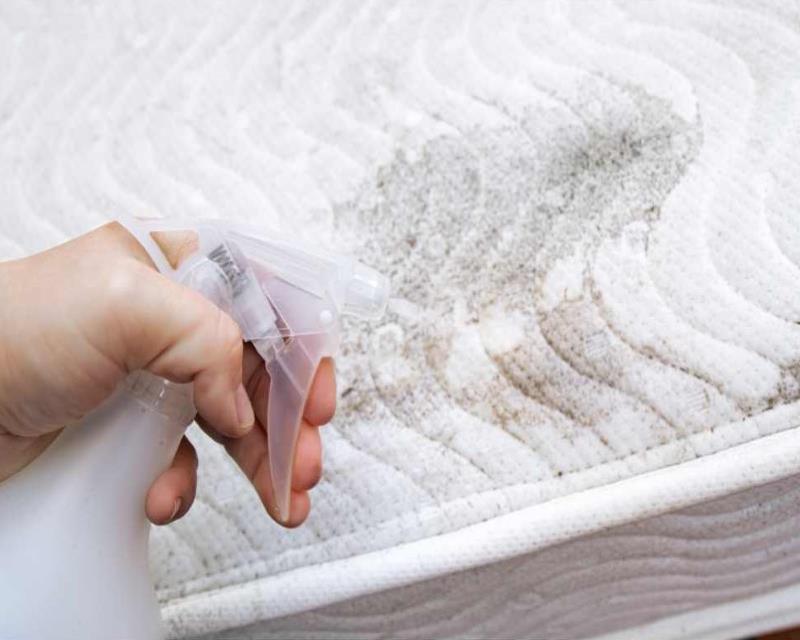Has mold gotten a hold of your damp laundry because you left it in a hamper too long? You can save it by learning how to get mold out of clothes, so don’t throw them out just yet.
Humid, dark spaces such as damp closets, clothing hampers, and humid basements are ideal for the development and continued existence of mold and mildew. Clothes kept in any of these damp areas may begin to accumulate microscopic mold spores. Understanding and knowing how to get mold out of clothes is a must given that mold can cause health problems, such as skin irritation and respiratory problems.
Guide: How To Get Mold Out Of Clothes
Ready to learn how to get mold out of clothes on your own, all by yourself?
We got you! Let’s get started!
Look At Your Clothes Care Labels
Always comply with the manufacturer’s instructions, especially if it comes to the recommended water temperature and drying method for your clothes.
Pretreat It
When you find mold growing on your clothes, gather all the moldy stuff and see whether any other closest clothes have been affected as well.
To start eliminating the mold, lay the clothes out in the sun (if it’s shining) while it’s still damp. If you are unable to do this, move the moldy clothes into a room with lots of natural light and close any windows. To stop mold spores from spreading, shut off any vents that connect to the rest of the house.
When cleaning, wear gloves and a mask to protect your skin and prevent respiratory problems.
Get The Mold Out
Make sure you take every precaution suggested on the product’s packaging and test the product on an unnoticed part of the cloth first.
Household Soap
Ordinary household soap, either liquid or bar form, can be directly applied to existing mold stains, washed away with water, and then leave the clothes outside to dry in the sun.
White Distilled Vinegar
White distilled vinegar is a great mold killer that can either be applied directly to the stains or used to pre-soak the clothes in a bucket of water with one cup of vinegar. For brighter whites and to eliminate mold odors, you may also add 1-2 cups of white distilled vinegar to your washing machine per cycle.
Hydrogen Peroxide
To make a solution, combine 1 part of 20% hydrogen peroxide with 4 parts water. Use this exclusively on organic clothes – cotton, linen, etc. – without easy-care treatments or that aren’t flame-resistant.
Borax
You can purchase this powdered or detergent-grade water-soluble mineral as a natural mold remover. If it comes in powder form, follow the directions and thoroughly combine half a cup of borax with hot water. After that, just pour the solution into your washing machine’s drum and proceed with your regular laundry.
Bleach
While bleach works well in eliminating mold, it also ruins colors. Use bleach, therefore, exclusively on white or dye-resistant clothes, either through a pre-soak or by scrubbing it straight onto the mold. Since bleach fumes can be powerful, always read the product instructions, wear rubber gloves, and work in an area with good ventilation away from children.
Dry Your Clothes
Hang and dry your clean clothes under the sun, if possible. Any remaining moisture and mold are eliminated by the sun’s UV rays and added heat.
Set up the dryer temperatures that are ideal for your clothes on cloudy or cooler days, bearing in mind that mold is more easily killed by warmer temperatures.
As any moisture on the clothes can cause the mold to return, make sure it is completely dry.
Re-Check For Molds
Make sure there are no longer any visible signs of mold by giving your clothes a thorough inspection. Mold can occasionally still be present. Pre-soak it longer and clean the clothes more thoroughly if you realize that you need to repeat the process two or even three times.
Smell the clothes if you are unable to see any mold. An earthy or musty odor indicates that mold is most likely still there. You can either skip the pre-treatment and rewash and dry the clothes, depending on how strong or subtle the odor is.
Fold And Store The Clothes Properly
Don’t destroy all your hard work by throwing clothes in the dryer or wash basket after cleaning them. Fold and store your clothes once you’re confident they’re clean and free of mold. Clean clothes should be kept in a dry environment with some airflow, preferably.
Freshly washed clothes should never be left in moist environments in which mold can grow again. Use disinfectant to get rid of any remaining mold spores if you find moldy clothes in your laundry basket before adding new dirty clothes.
How Not To Let Mold Grow On Clothes
Although we have provided a guide on how to get mold out of clothes, the best approach for minimizing mold growth is to completely prevent it. This is how you do it.
- Check for mold in your washing machine regularly. Run an empty hot water cycle with detergent or bleach if you smell or suspect mold.
- Take your clothes out of the washer or dryer right away.
- After washing clothes, make sure they don’t stay damp. Dry them right away. Mold is more likely to grow the longer they remain damp.
- Never put damp towels or clothes in the washing basket. Before putting them there, let them air dry or wash them straight away.
- Remember that mold may grow in the most unlikely places, so clean out the interior of your closets once a month. Wood shelving is more likely to grow mold than wire shelf.
· Look for leaks and damp spots in your house and fix them; pay attention to any musty odors.


